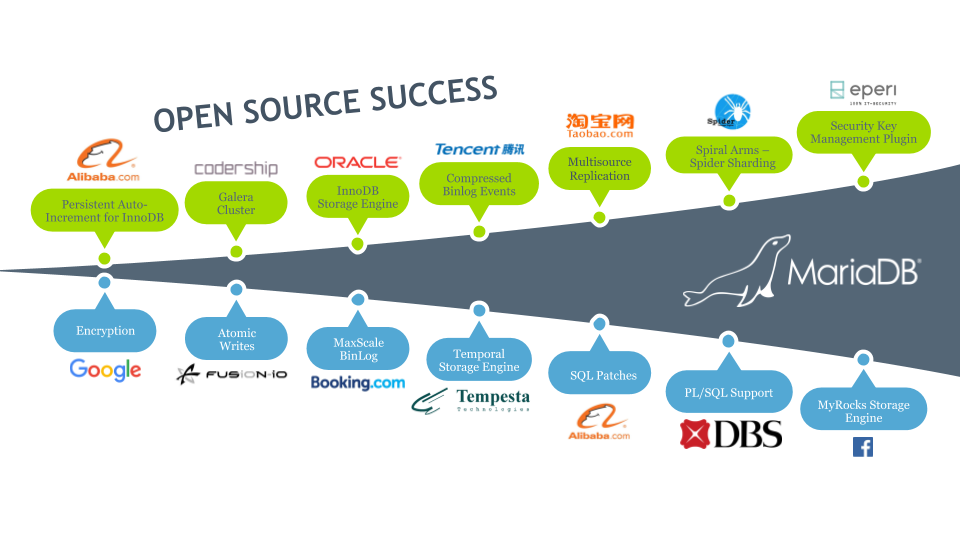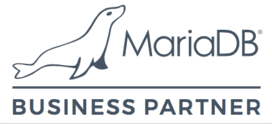About MariaDB
Made by the original developers of MySQL. Guaranteed to stay open source.
MariaDB turns data into structured information in a wide array of applications, ranging from banking to websites. It is an enhanced, drop-in replacement for MySQL. MariaDB is used because it is fast, scalable and robust, with a rich ecosystem of storage engines, plugins and many other tools make it very versatile for a wide variety of use cases.
MariaDB is developed as open source software and as a relational database it provides an SQL interface for accessing data. The latest versions of MariaDB also include GIS and JSON features.
Notable users include Wikipedia, WordPress.com and Google.

MariaDB Platform
Do More With Your Data
One Database. Any Workload.
Transactional
MariaDB Platform can be deployed in a transactional configuration with clustering, replication or sharding on top of row-based storage optimized for fast transactions.
Analytical
Or, MariaDB Platform can be deployed for analytics by choosing distributed, columnar storage optimized for interactive, ad hoc analytics – and scaling out as needed.
Hybrid
And for transactional applications with greater analytical requirements, MariaDB Platform can be deployed in a hybrid configuration by choosing both row-based and columnar storage.
Why Now
- You’ve outgrown your current database
- You need to keep historical data longer, and use it
- You need to make analytics available for customers
Business Benefits
- Data monetization with analytics for customers
- Faster time to insight with zero-ETL analytics
- Reduced costs with tech consolidation
Technical Benefits
- Streamlined data ingestion
- Workload-based isolation and scaling
- Hybrid cloud and heterogeneous hardware
Components
- MariaDB Server
- MariaDB Cluster
- MariaDB ColumnStore
- MariaDB MaxScale
- Connectors
- Tools
- Containers
- Big data connectors
- Import adapters
Architecture




